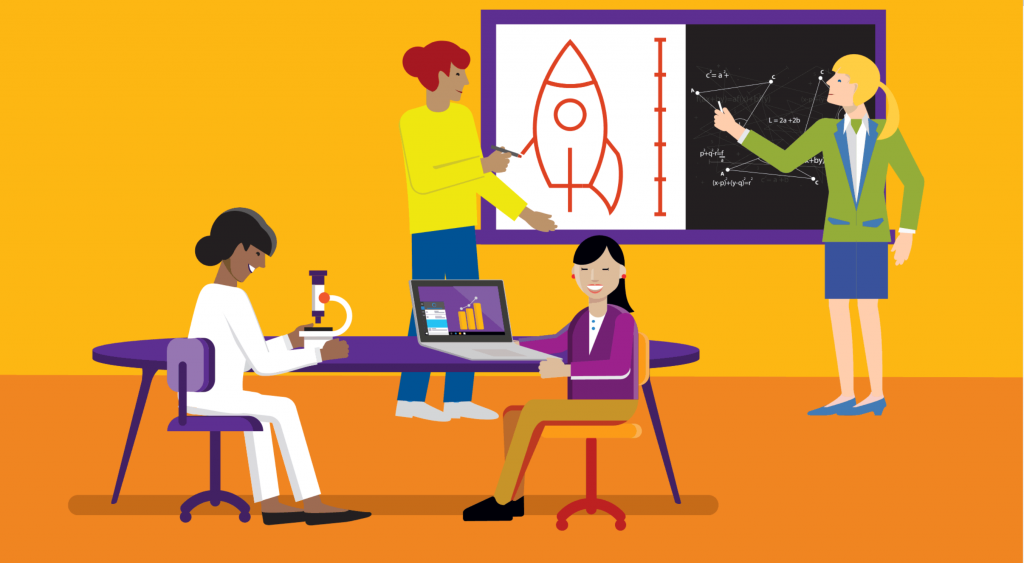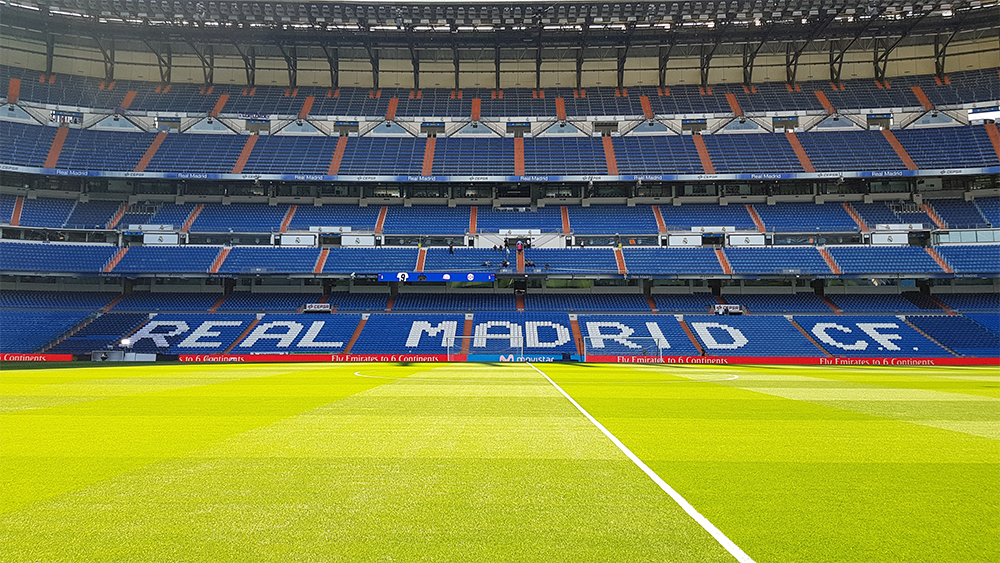It’s been quite the year.
From the call to democratize AI for the masses, to revealing new devices and the world’s most powerful console, the past 12 months have been a roller coaster ride for Microsoft, and the tech world in general.
Thank you for being with us through all of the announcements and discussions. To celebrate the closing of 2017, and to usher in the new year, we’ve rounded up five of the most-read stories on Microsoft Europe over this past year.
Happy Holidays!
1.) Why don’t European girls like science or technology?
Earlier this year, Microsoft published a piece of ground-breaking research which showed that in Europe, many girls lose interest in STEM subjects around the age of 15.
The research – which involved a survey of 11,500 women between the ages of 11 and 30 across 12 countries in Europe – brought to light some key findings, and in doing so, highlighted areas of concern, while sparking a discussion as to how we can get more girls and young women interested in pursuing STEM subjects.
Some of the insights gained from the research show that a lack of female role models is one main reason why many girls don’t pursue a career in the sector, alongside a lack of practical, hands-on experience with STEM subjects.
Young girls also tend to engage with STEM subjects at the age of 11.5, but after their interest has been lost, it’s almost impossible to reignite their passion – a key finding which identifies a crucial area to address.
2.) The transformation of Real Madrid
Stepping into the cavernous majesty of the Bernabéu on match day is an experience that leaves you feeling awed and inspired.
Empty, but for a few staff preparing for the evening’s game, it’s impossible to shake off the image of the Colosseum.
Thousands upon thousands of empty seats, rising to meet the sky, all focused on one green central arena, where modern-day gladiators settle their differences with finesse and style.
Hours from now, those seats will be filled with roaring Real Madrid fans, whose chants and reactions will charge the air with an electric atmosphere.
For the club, whose traditions run deep in its 115-year history, these fans are its lifeblood. But what about those outside of the arena – not just in Spain, but across the whole world?
3.) Building Bridges – how Minecraft helped a father connect with his son who has autism
I am what you would call, a neurotypical person. Walking down a bustling high street or grabbing a drink with friends are activities that blend into my day without a second thought. But for someone with autism, the world can be a scary place, and the things I take for granted can make or break someone else’s world.
Prior to writing this article, I watched a number of videos designed to give neurotypical people – namely, those not affected with a developmental disorder like autism – a sense of what it’s like to be on the autism spectrum.
Overly bright lights, sudden, loud disorientating noises, distractions, anxiety from straying away from an established routine and more, are just some of the ways that people with autism experience the world.
While watching videos and reading articles have helped me learn more about autism, its nature as a spectrum disorder means that its manifestations, symptoms and traits vary massively from individual to individual. In the words of Dr. Stephen Shore, “If you’ve met one person with autism, you’ve met one person with autism.”
Keith Stuart, games editor at the Guardian, is familiar with the challenges of having a child with Autism Spectrum Disorder (ASD). His son, Zac, was diagnosed at the age of six, and the years before and after the diagnosis have provided both Keith and his wife with numerous challenges – challenges which affect millions of families across the world on a daily basis.
For people like myself who don’t have to deal with these challenges, these struggles can be hard to understand – and that’s where Keith’s book comes in.
4.) The Beer Fingerprinting Project – how Artificial Intelligence could create your next pint
The Carlsberg Research Laboratory in Denmark creates 1,000 different beer samples, daily. That’s enough for more than two samples for each person living in Copenhagen, over the course of a single year.
With such a strong focus on research, it’s no surprise that Carlsberg is looking towards the future, and the opportunities that technology can provide.
The company’s new multi-million research study, enticingly named The Beer Fingerprinting Project, looks set to change the way how new beers are created and enjoyed – and it’s all thanks to Artificial Intelligence (AI).
5.) A cable stretching 4,000 miles between the US and Spain is the key to a high-speed future
6,000 metres beneath the crashing waves of the Atlantic Ocean, traversing live volcanoes, coral reefs and earthquake zones, lies an unassuming cable around 1.5 times the diameter of a garden hose.
Stretching 4,000 miles across from Virgina Beach in the US, to Bilbao in Spain however, the new Marea cable, which can carry information at blistering speeds, is exponentially more important than its appearance would suggest.
Dubbed Spanish for “tide”, Marea is capable of transferring data at a staggering 160Tbps. It’s so fast, in fact, that it’s capable of sending eight times the entirety of the US Library of Congress’ collection, in a single second.
Coming to fruition after Microsoft and Facebook agreed to partner on the development, Spanish telecommunication infrastructure company Telxius, a subsidiary of telecom provider Telefónica, joined as the third partner to manage the construction process and operate the cable.









